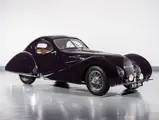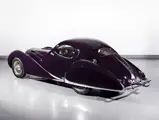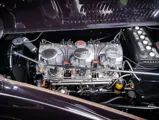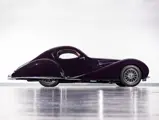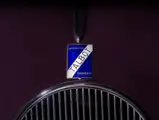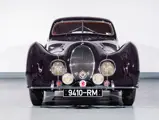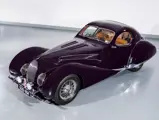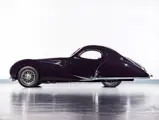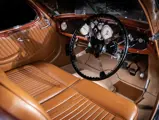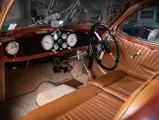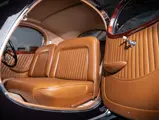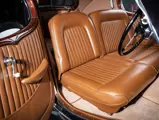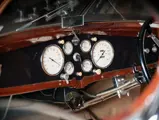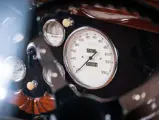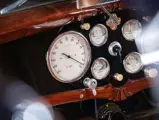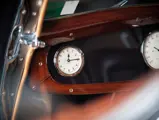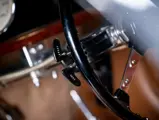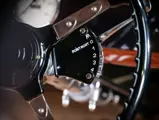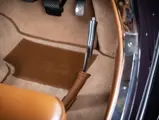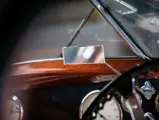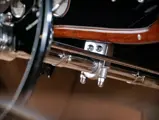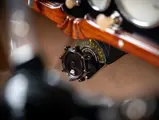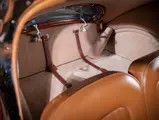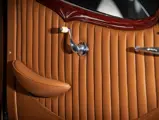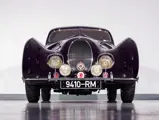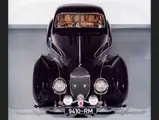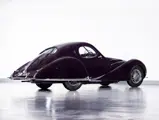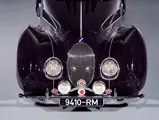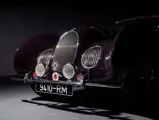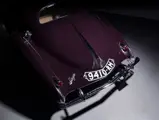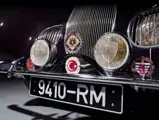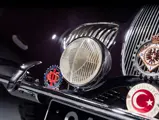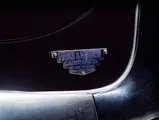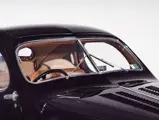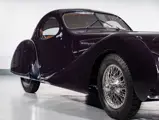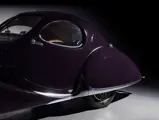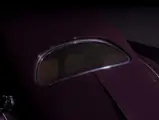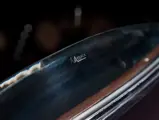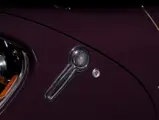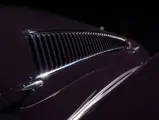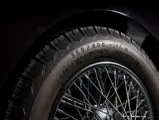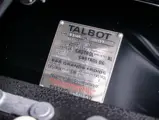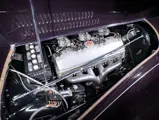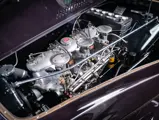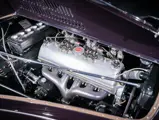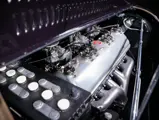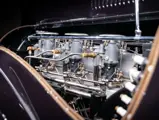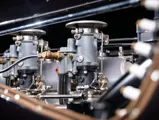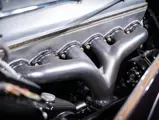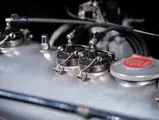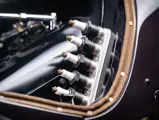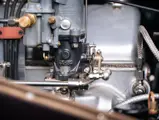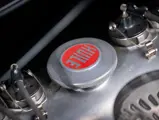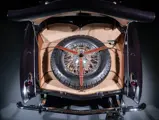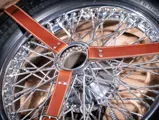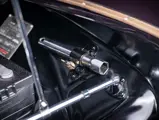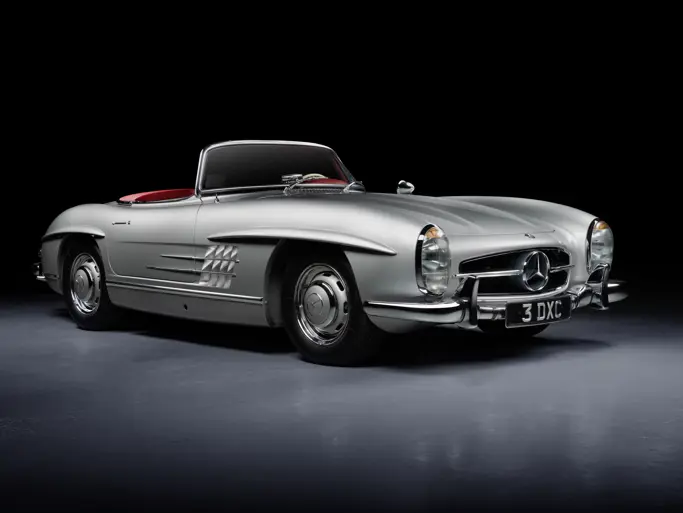Monterey 2022
1938 Talbot-Lago T150-C SS Teardrop Coupe by Figoni et Falaschi
Offered from the Oscar Davis Collection
{{lr.item.text}}
$7,265,000 USD | Sold
 | Monterey, California
| Monterey, California
{{internetCurrentBid}}
{{internetTimeLeft}}

- One of just 11 “New York” style Teardrop Coupes constructed by Talbot-Lago in 1937 and 1938, and the sole example known to have been commissioned with racing in mind
- Exquisitely styled in the Art Deco manner by fabled Parisian Carrossiers Figoni et Falaschi
- Competed in the 1939 Le Mans 24 Hours, driven by Phillipe Régnier de Massa and Norbert-Jean Mahé
- Remained dormant in East Germany for almost 50 years until its liberation in 1989
- Exquisitely restored, having won the Trofeo BMW Group - Best of Show at the 2010 Villa d’Este Concorso d’Eleganza and the 2011 Louis Vuitton Classic Concours Award
“The Talbot-Lago Teardrop Coupe represents what may be one of the finest examples of assembled form ever applied to the automobile.”
Strother MacMinn, Automotive Designer and Writer
Having assumed control of Automobiles Talbot S.A in 1933, and subsequently purchased the historic name from the receivers in 1936, ambitious Anglo-Italian engineer Anthony Lago set about revitalizing the beleaguered company with a range of new cars designed by former Fiat and Sunbeam-Talbot-Darracq engineer Walter Becchia. In the context of the period—one dominated by the fallout from the Great Depression—cost control would be critical and, although the company offered more than a dozen models over the next four years, many shared common parts such that only four different chassis designs were used during this time.
Amongst his myriad briefs, Becchia was tasked with developing a competition version of the company’s 3-liter six-cylinder T150 engine, as Lago had identified motorsport as an area critical to the company’s future success. A comprehensive redesign saw the newly enlarged 4-liter engine modified with hemispherical combustion chambers and three Zenith-Stomberg carburetors; its generous 104.5-millimeter stroke afforded copious torque at modest revs, rendering it ideally suited to competitive use.
However, Lago understood that future racing success would require far more than mere horsepower. To this end, he instructed Becchia, in conjunction with fellow Fiat alumnus Vincenzo Bertarione, to construct a commensurate chassis. The new T150-C frame—the “C” denoting “Corse”—was of a conventional ladder type, with box section side spars joined by tubular cross-members. The short-chassis Super Sports, or “SS,” variant boasted a wheelbase of 104 inches and featured independent front suspension via a combination of top links and a transversely mounted leaf spring, while at the rear an underslung live axle was employed. Further modifications specific to the model included a large-capacity oil pan, while the fitment of a Wilson pre-selector gearbox ensured quick and dependable gear changes.
Four T150-C SS Roadsters were constructed for the 1936 season, although it was not until the following year that they achieved the results they deserved: a magnificent 1-2-3-5 in the Sports Car-only French Grand Prix and a commanding win in the RAC Tourist Trophy at Donington Park were notable highlights.
ENTER FIGONI ET FALASCHI
Lago had, by this time, been introduced to celebrated coachbuilder Giuseppe Figoni by Luigi Chinetti, a mutual friend and then Talbot-Lago’s Parisian agent. Italian by birth, Figoni had emigrated to Paris as a young boy, subsequently establishing his fabled coachworks in nearby Boulogne-sur-Seine. It was there that he built up a strong bond with Chinetti; the latter employed him to modify the bodywork of the long-chassis Alfa Romeo 8C 2300s with which he would emerge victorious at Le Mans in 1932 and 1934.
Figoni had been commissioned by Lago to construct the bodies of some, if not all, of the T150-C SS Roadsters; their aerodynamic cycle-type wings bore a strikingly similar appearance and construction to those fitted to Chinetti’s Alfa 8Cs. Mindful of the seemingly limitless styling opportunities offered by the distinctly en vogue Art Deco movement, Lago discussed with Figoni the possibility of fitting a number of his chassis with suitably extravagant coupe bodies constructed by the now re-named Figoni et Falaschi coachworks. Such was Figoni’s enthusiasm for the idea that both parties embarked upon an exclusive arrangement to work together in 1937, and no less than 16 such coupes were constructed over the next two years.
An initial batch of five cars, retrospectively termed “Jeancart” coupes in deference to the purchaser of the first such example, was constructed using a combination of T-150-C and T23 chassis. Featuring trademark Figoni touches such as steeply raked windscreens, sumptuously sculpted fenders, and oval window apertures, each was impossibly beautiful yet subtly different to the next. Upon its unveiling at the 1937 Paris Motor Show, the new coupe was dubbed “Goutte d’Eau”—literally “water drop”—although this term was quickly anglicized into the more appropriate “teardrop,” which endures to this day.
Whilst the Jeancart coupes all exhibited an elegant notch-backed side profile, the second-series cars were arguably even more pure in aesthetic terms, exhibiting as they did a simpler “fastback” tail section. Launched at the 1937 New York Auto Show, the second-series examples assumed the unofficial title of “New York” cars, and 11 were constructed in this style: 10 on 104-inch T150-C SS frames, and one on the longer 116-inch T23 chassis. Each was powered by a 140-horsepower version of the dependable T150-C engine.
THE SOLE COMPETITION TEARDROP
Believed to have been the penultimate “New York”-style car built, the magnificent example which RM Sotheby’s is honored to offer here, chassis 90117, has the distinction of being the only Goutte d’Eau coupe constructed expressly with competition in mind.
Originally commissioned by Philippe Régnier de Massa, a member of one of France’s oldest and most decorated noble families, it was ordered with several competition-inspired modifications, including additional driving lights, a 250-kph speedometer, a "semi-bucket" seat on the driver's side, reinforcement tubes and brackets in the engine bay, a long-range fuel tank, and an external fuel filler cap. Furthermore, according to Figoni’s son Claude, the car was two inches lower and four inches longer than any other Teardrop coupe in an attempt to minimize both frontal area and drag, and it featured both an opening rear window and a unique heart-shaped sunroof to aid ventilation.
Doubtless buoyed by the fine 3rd place achieved at Le Mans in 1938 by the Talbot-Lago Portout Coupe of Prenant and Morel, de Massa opted to enter his car in the 1939 edition; remarkably his first race of international standard. For reasons not entirely understood, the car was officially entered by British motor racing luminary and writer T.A.S.O. Mathieson—himself sharing a new T26 model in the race with Chinetti—with de Massa co-driven by Norbert-Jean Mahé, who had finished 9th in the 1934 event. The pair had been performing strongly in 9th place when they were eliminated from the race on the 88th lap, a retirement variously attributed to either a broken valve spring or disqualification following a contravention of the sporting regulations.
An appearance in an unnamed post-Le Mans Concours aside, no other outings are recorded for the car during de Massa’s ownership. With war having broken out barely 10 weeks after Le Mans, the car was reputedly confiscated by the Germans in or around 1942, and was eventually acquired in neglected, engineless state by a Herr A. Becker of Rangsdorf, near Berlin, shortly after hostilities ceased.
Following the fall of the Berlin Wall in late 1989, 90117 was sold to Peter Schmitz, a resident of western Germany, who commenced a long-overdue restoration of the car. However, Herr Schmitz kept the car only until 1995, when it was sold in an unfinished state to Automuseum Deventer of Joure, in the Netherlands.
Although the car was separated from its engine at some point in the past, research on file indicates that a correct-type Talbot-Lago engine was located in the United Kingdom and subsequently fitted. A separate racing hood, a testament to its time at the Circuit de la Sarthe complete with cut-out holes for oil and coolant filler access, accompanies the sale of the car today.
In 1996, ownership of the car then passed to Georg Lingenbrink of San Diego, California. It was in the latter’s custody that a comprehensive six-year restoration commenced; the car being finished in the appropriately elegant color scheme of deep aubergine with contrasting tan pigskin leather upholstery, and tan cloth interior trim.
In 2006, chassis 90117 entered the esteemed Oscar Davis Collection, in whose custody it has remained ever since. Mr. Davis entrusted the car to respected restorers Classic and Sport Auto Refinishing concern of Edinburg, Virginia who assessed it exhaustively, and performed a further $100,000 of restoration work—of both a mechanical and cosmetic nature—in 2006 and 2007. In 2007 the car, remarkably, made its first public appearance in 68 years at the Pebble Beach Concours d’Elegance. It subsequently took a series of richly deserved wins at European counterpart, Villa d’Este, in 2010, including the juried Trofeo BMW Group - Best of Show and the publicly selected Trofeo BMW Groupe Italia. The Louis Vuitton Concours Classic Award, intended to recognize the “best of the best” among the world’s concours-winning automobiles, followed in 2011.
Impossibly stylish, exquisitely detailed, yet built on competition foundations offering spirited performance and standard-setting levels of refinement and ride quality, the Talbot-Lago “Goutte d’Eau” coupes remain amongst the most highly prized of all coachbuilt pre-war cars. Of the 11 “New York"-style examples constructed, 90117 remains among the most compelling; a car which intertwines Art Deco elegance with a brief but fascinating competition history, not to mention a period of prolonged (if unwitting) preservation behind the Iron Curtain and recent concours success.
Immaculately presented in the most fetching of color combinations, it remains equally—and perhaps uniquely—qualified for the world’s finest vintage tours, rallies, and concours as well as, somewhat incongruously, vintage racing events such as the Le Mans Classic and Monterey Historics. Guaranteed to steal the limelight at any event in which it is entered, this represents one of the most significant coachbuilt cars ever to be offered for public sale, and an opportunity which should be given serious consideration by any appropriately discerning collector.

